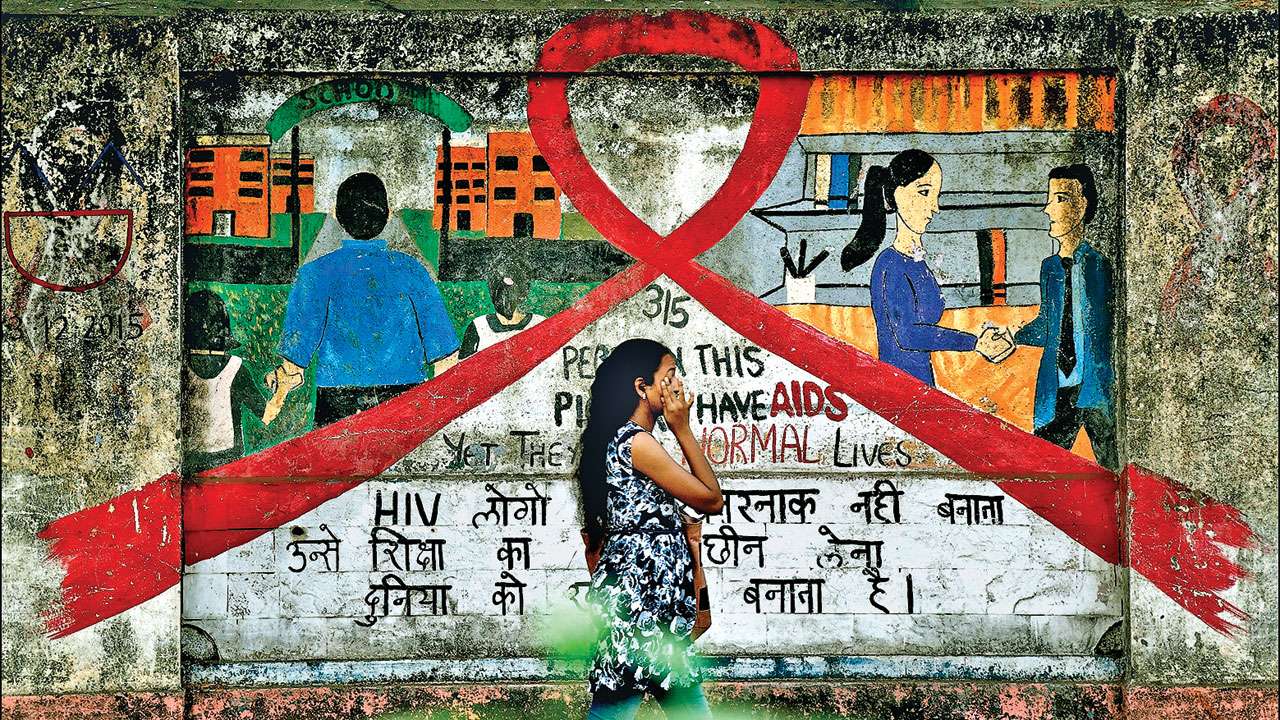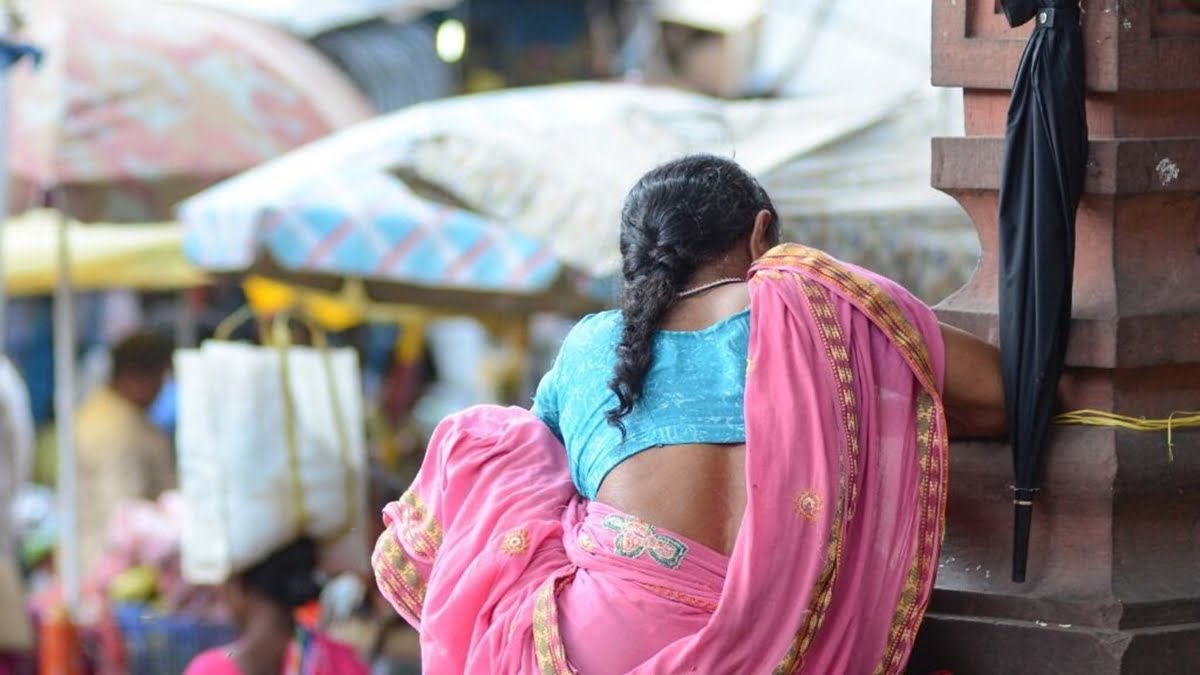HIV or the Human Immunodeficiency Virus has taken a heavy toll on the health of individuals all across the world since the 1920s. HIV causes AIDS (Acquired Immunodeficiency Syndrome) and due its contractible nature and stigmatic (and grossly misrepresented) association with sexual contact, it also leads to structural violence on people, especially womxn and other marginalised communities affected by AIDS. One of the tangible impacts of this structural violence is the stigmatisation, which has led to people with HIV/ AIDS being denied their right to good healthcare services and education and has led to them being denied economic opportunities to earn their livelihoods and being subjected to discrimination and marginalisation. As is with all forms of structural violence, the women and the marginalised sections of the society affected by HIV are further oppressed due to their social positions. Women and other genders, people with ‘non-heteronormative’ sexual orientations and people who engage in sex work have been victims of structural violence and the process of dehumanisation, as a result of the hegemonic patriarchal system. It has resulted in the violation of their basic human rights.
Also read: 22 Years On, AIDS Bhedbhav Virodhi Andolan: The Struggle Continues
Women and other genders, people with ‘non-heteronormative’ sexual orientations and people who engage in sex work have been victims of structural violence and the process of dehumanisation, as a result of the hegemonic patriarchal system. It has resulted in the violation of their basic human rights.
This paper focuses on the structural violence suffered by women with HIV/ AIDS.
To comprehend the causes of structural violence, it is important to understand how HIV impacts individuals. HIV, unlike most other kinds of viruses, does not spread through the medium of air. Instead, the bodily fluids present among humans, like high risk fluids which include blood, breast milk and sexual fluids (like vaginal secretion and semen), and low risk fluids which include tears, sweat and saliva, enables the virus to survive and enables the process of transmission from one body to another. The virus attacks and destroys the white blood cells which are responsible for building immunity and as a result, ensures its multiplication in the body. HIV/ AIDS can spread through blood transfusion, used syringes and used razor blades. Engaging in anal or vaginal sex with a HIV+ person can also lead to the spread of the virus. The most severe form of the HIV infection leads to AIDS, which occurs when the white blood cell count drops below 200. The most common symptoms of acute HIV include fever, cold, headache, rashes and fatigue among others. They very closely resemble the symptoms of common cold and flu. However, in its chronic stage, the symptoms reduce. People with AIDS are exposed to symptoms like pneumonia, tuberculosis and toxocolosis among others. While there exists no cure for AIDS, it can be prevented, by taking precautions like the use of condoms, etc., and its progression can be decelerated.
Structural violence, as has been described by Dr. Gene Richardson, refers to the violence which, despite not being physical, affects the health of the population. In India, for instance, caste identity plays an essential role in determining one’s access to opportunities. And without those opportunities, like access to education or clean water or equal employment opportunities, the health of an individual is bound to suffer.
As has been enunciated in the book, From Outrage to Courage (2008), patriarchy has ensured their subordination in society and has limited their capacities to express themselves and to demand their basic rights. An instance of structual violence is how women who belong to the poor economic strata, do not get access to quality education and as a result, are deprived of economic opportunities, knowledge of health and other socio-political opportunities. The patriarchal order along with silence around sexual activity and relations has also enabled the existence of an unequal status quo and the persistence of economic, social and legal marginalisation and resultant structural violence. Such factors have also made poor women more vulnerable to HIV/ AIDS. Women, who are engaged in a heterosexual marriage or a long-term relationship where men can regularly engage in sex outside of that union, face the risk of acquiring HIV/ AIDS. Patriarchy has enabled women and girls to be beaten in their homes, trafficked into forced prostitution, raped by soldiers and rebels, husbands and house-guests, in-laws and “caretakers”. Such incidences too have enhanced the possibility of women contracting HIV/ AIDS.
Another manifestation of the structural violence as an effect of HIV/AIDS is the lack of equal opportunities which leads women to take up sex work to sustain themselves. Female sex workers, despite knowing the consequences of HIV, often fail to convince their visitors to use condoms. Women living with AIDS have to fight not only against stigma, but also against the impoverishment caused by the violations of their rights. Fear of ‘untouchability’, humiliation and degradation, from their family, close friends and doctors, has further pushed women to not attain medical supervision or go through medical tests.
To be able to counter such discriminatory practices brought about by structural violence, social intervention is indispensable. And no, social isolation does not count as an intervention. Azhar, et al., (2019) successfully recorded the experiences of sixteen girls in Hyderabad who were forced to stay away from their families as a result of being affected by the virus. It was thought that such isolation would cure them of HIV/ AIDS. Their families, despite being educated and being aware of the transmission process, stayed away from them because of the negative connotations attached to HIV/ AIDS and held the women responsible for acquiring such an ailment, thus furthering the narrative of victim shaming. They were disrespected and degraded by the hospital staff as well.

Such experiences of social isolation had led to the women feeling rejected, isolated and depressed. To counter these manifestations of structural violence, there exists a need for the clinical social workers, civil society organisations and the government to prioritise the mental health of people suffering from HIV, to spread awareness regarding the spread of HIV, discourage discrimination of any sort against persons with HIV and to reinstate women’s right to equality, good health, dignity and equity. Huge gaps in the education of the girl child should be addressed. Secondary education should be made compulsory and efforts should be taken by the governmental authorities to verify their attendance and learning. Access to education and employment opportunities coupled with interventions to less the impact of socio-economic inequities go a long way in curbing structural violence. Education should integrate components of the precautionary measures that have to be taken to avoid incidences of HIV and should include compulsory comprehensive sexuality education. In Botswana, where the government had taken efforts to ensure the fulfillment of secondary education, a 12 percent decrease in girls’ risk of acquiring HIV was observed.
Access to education and employment opportunities coupled with interventions to less the impact of socio-economic inequities go a long way in curbing structural violence. In Botswana, where the government had taken efforts to ensure the fulfillment of secondary education, a 12 percent decrease in girls’ risk of acquiring HIV was observed.
Also read: International Sex Workers Day: Time To Detach Sex Work From Morality
Also, efforts need to be taken to realise women’s right to economic opportunities and financial empowerment. State efforts should be made towards making women active participants in the process of formulating such programmes and policies. The civil society, at large, should be involved in the implementation, oversight, monitoring and control of such policies and programmes on-ground and should ensure accountability of the government. It is obligatory for the governments, civil society organisations and the civil society, all across the globe, to put in such efforts to actualise the end of stigma and inhumanity brought about by the structural violence inflicted by HIV/AIDS, especially on women.
Sampurna is currently pursuing Masters in Development from Azim Premji University and is passionate about research and writing. She has been interested in writing about intersectional issues, persistent gender inequality and other spheres of disparity. She can be found on Instagram.
Featured Image Source: Blog.giveindia.org




